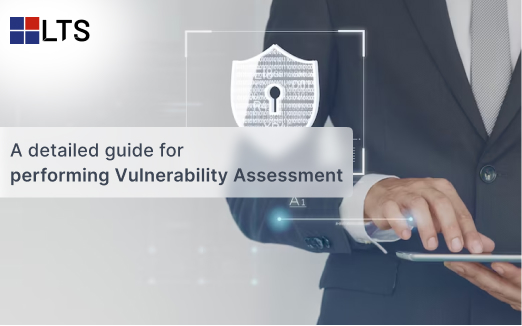A Detailed Guide for Performing Vulnerability Assessment
A vulnerability assessment and penetration testing is the most effective technique for identifying possible security holes. With regular vulnerability assessments, critical and sensitive information could be recovered from cyber criminals who have targeted numerous non-profit organizations since the pandemic. This can lead to devastating consequences such as Loss of donor trust and brand awareness.
Vulnerability assessment is one of the most effective techniques for identifying potential security gaps in an organization’s Cyber Security design.
Unfortunately, most non-profit organizations have never performed a single vulnerability assessment to identify and mitigate potential risks. This is one reason his non-commercial website has become an attractive target for hackers.
This article explains a vulnerability assessment and the steps required for a good evaluation.
Examples of threats that vulnerability assessment can prevent include:
XSS, SQL injection, and other code injection attacks.
Privilege escalation due to incorrect authentication mechanism.
Insecure Default Settings – Software shipped with insecure settings such as B. Guessable administrator passwords.
There are many types of vulnerability assessments.

Some of the varieties of vulnerability assessments:
Host Reputation: Reputation of critical servers that may be vulnerable to attack if not properly tested or generated from a stretched machine image.
Network and Wireless Assessment – Assessment of policies and practices to prevent unauthorized access to private or public networks and network-accessible resources.
Database Assessment – Evaluating databases or large data systems for vulnerabilities and misunderstandings, identifying rogue databases or unstable development/test environments, and classifying sensitive data across an organization’s infrastructure.
Application Scanning – Identification of security vulnerabilities in web applications and their source code through automated front-end scanning or static/dynamic analysis of source code.
Vulnerability recognition (testing)
The main aim of this procedure is to make a broad list of application vulnerabilities. Security analysts test the security posture of applications, servers, or other systems by scanning with automated tools or by manual testing and assessment. Analysts also rely on vulnerability databases, vendor vulnerability disclosures, asset management systems, and threat intelligence feeds to identify security gaps.
2. Vulnerability Analysis
This step aims to identify the sources and root causes of the vulnerabilities identified in Step 1. – This includes identifying the system component responsible for each exposure and the root cause. For instance, the main reason for a vulnerability could be an old-fashioned version of an open-source library. This provides a clear path to fix-upgrade your library.
3. Risk Assessment
The primary aim of this step is to prioritize vulnerabilities. Security analysts assign a rank or severity to each exposure based on factors such as:
a. affected systems.
b. Data at risk.
Which business functions are at risk?
Light Attack or Compromise.
The severity of the attack.
The possible destruction from vulnerability.
4. Workaround
The purpose of this procedure is to close a security gap. Determining the most effective path to remediate or mitigate each vulnerability is usually a collaborative effort between security personnel, development, and operations teams.
Susceptibility Assessment Device
The Vulnerability Assessment Tool is designed to automatically scan for new and existing threats that may target your application. The types of tools are:
A web application scanner that tests and simulates known attack patterns. A
protocol scanner that looks for vulnerable protocols, ports, and network services.
Network Scanner helps you visualize your network and detect red flags such as stray IP addresses, spoofed packets, and doubtful packet generation from a particular IP address.
We recommend that you schedule regular automatic scans of all critical IT systems.
The results of these scans should be reflected in your organization’s ongoing vulnerability assessment process.
Vulnerability Assessment and WAF
Web application firewalls protect against application vulnerabilities in several ways. This eliminates the risk of exposing data to malicious actors.
Virtual patching can be performed. A developer and the IT team can confidently and safely deploy new patches for their applications by automatically patching newly discovered vulnerabilities at the network edge.
WAF provides a view of security events. Attack analysis helps contextualize attacks and uncover overarching threats (e.g., Thousands of seemingly unrelated attacks as part of a larger attack campaign). The WAF integrates with all major SIEM platforms to give you a clear picture of the threats you face and prepare for new attacks.
The Importance of Conducting Vulnerability Assessments
Vulnerability assessments involve scanning systems, machines, and networks to get an overview of an application’s security posture. These tools analyze and assess security risks and provide remediation recommendations. Regular vulnerability assessments are essential for modern applications and businesses for several reasons:
Finding out the exposures before attackers can exploit them –
Vulnerability assessments provide software teams with information about their security posture and vulnerabilities, likelihood, severity, and impact, enabling organizations to define action paths to mitigate attacks. VA tools also use consistent threat detection mechanisms to reduce the chances of an attacker infiltrating your application ecosystem.
- Evaluating the security performance of third-party solutions – Application programming interfaces (APIs) are the primary entry point for most security breaches, making third-party API integration solutions a potential security risk. Therefore, the VA process runs a third-party risk assessment program that recognizes, identifies, and classifies third-party plug-ins’ regulatory and financial risks. Comprehensive vulnerability assessments also include tools to fully understand third-party risk levels, allowing teams to derive efficient threat modeling.
Know vulnerability, click here: https://en.wikipedia.org/wiki/Vulnerability_assessment
The four phases of vulnerability management
1. identify vulnerabilities.
2.The first phase of the management process is to identify vulnerabilities that may affect your system.
3.Vulnerability assessment fixes the vulnerability.
4. Reporting security vulnerabilities.
